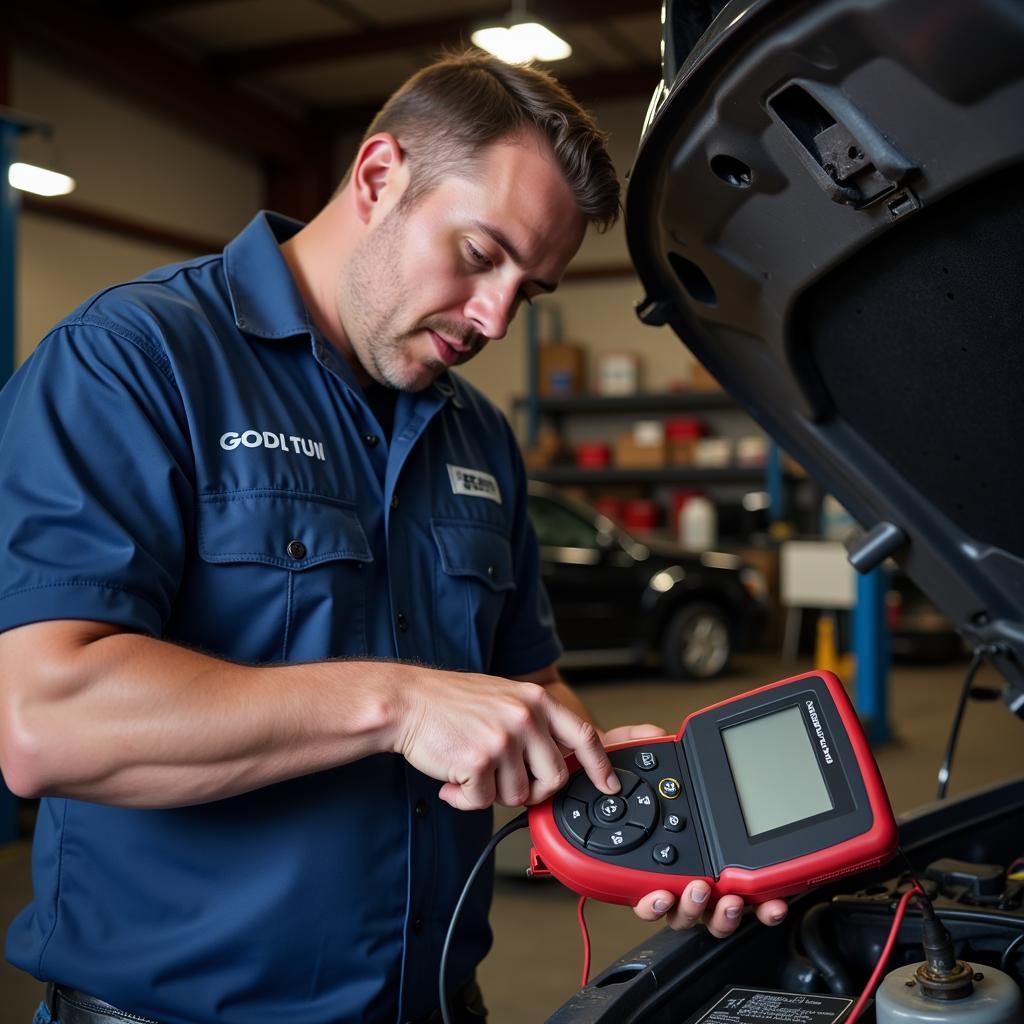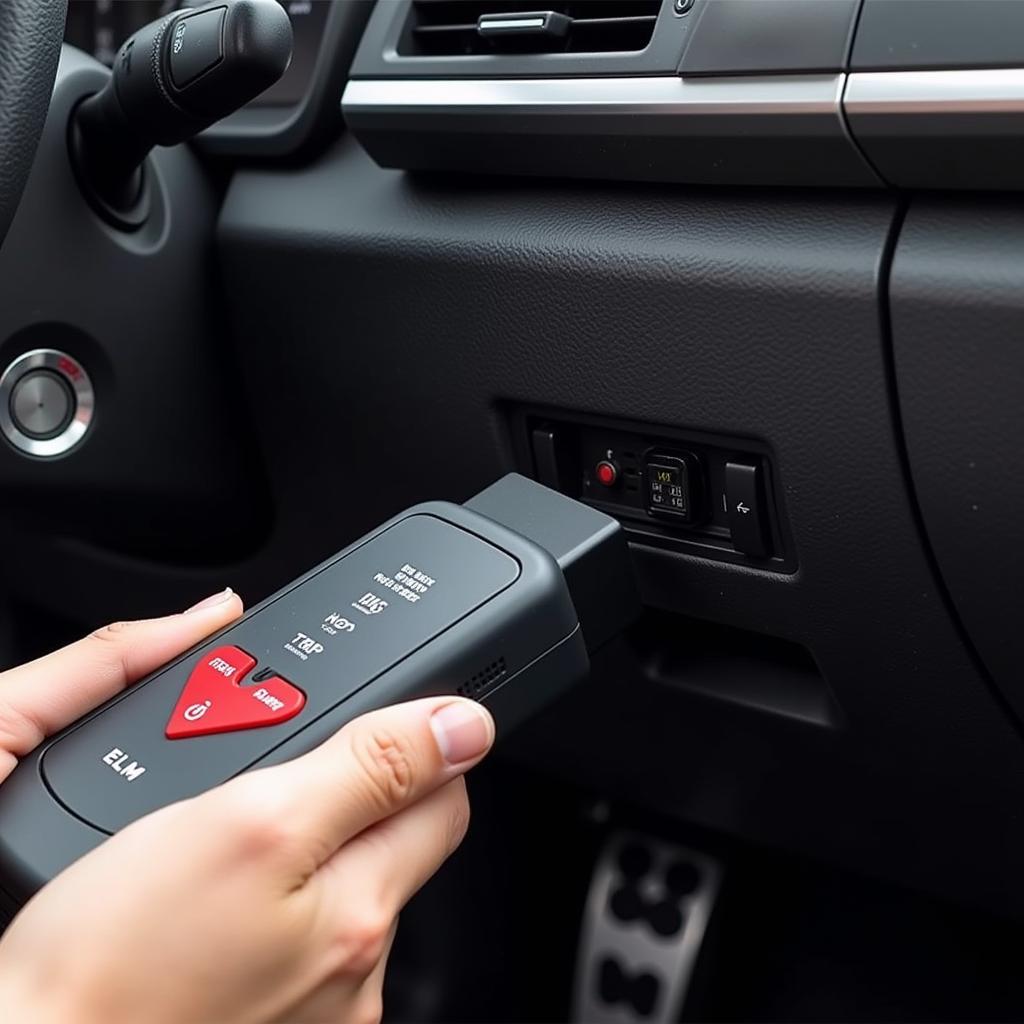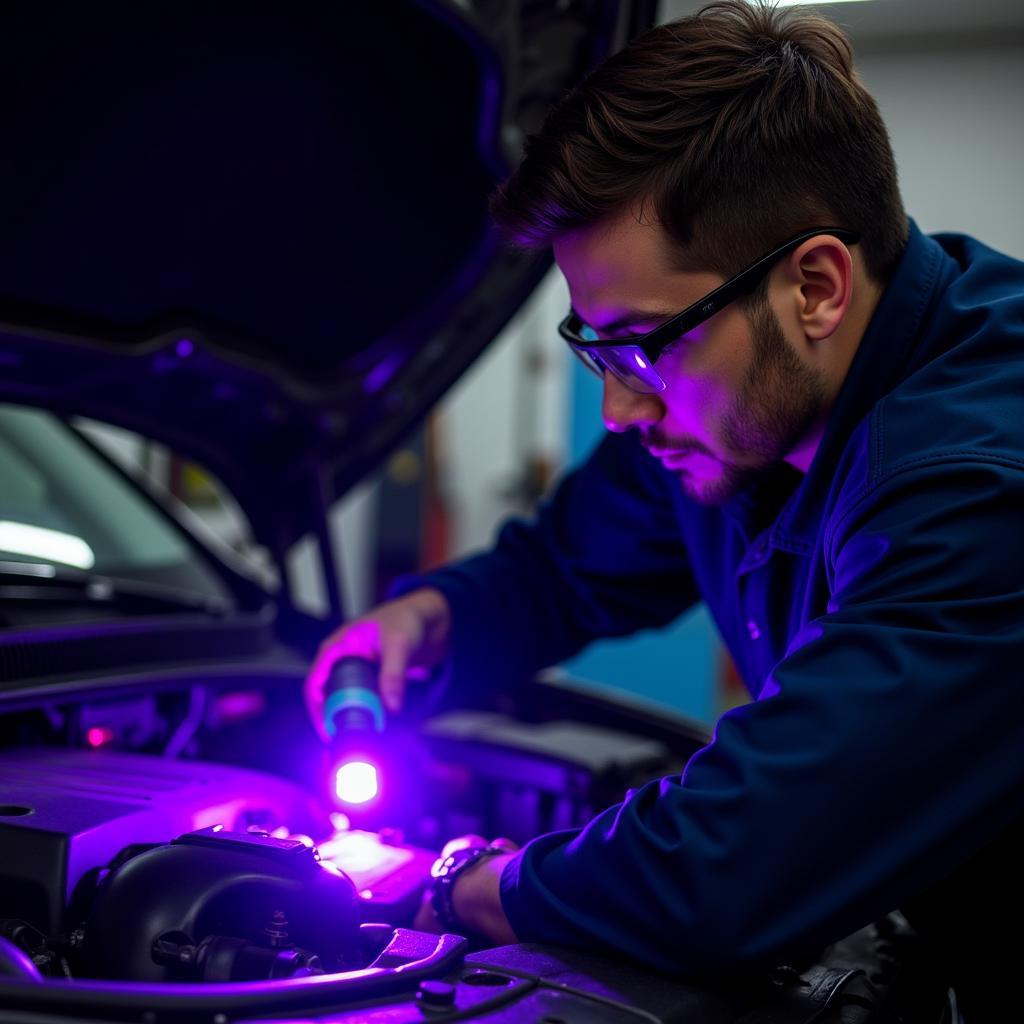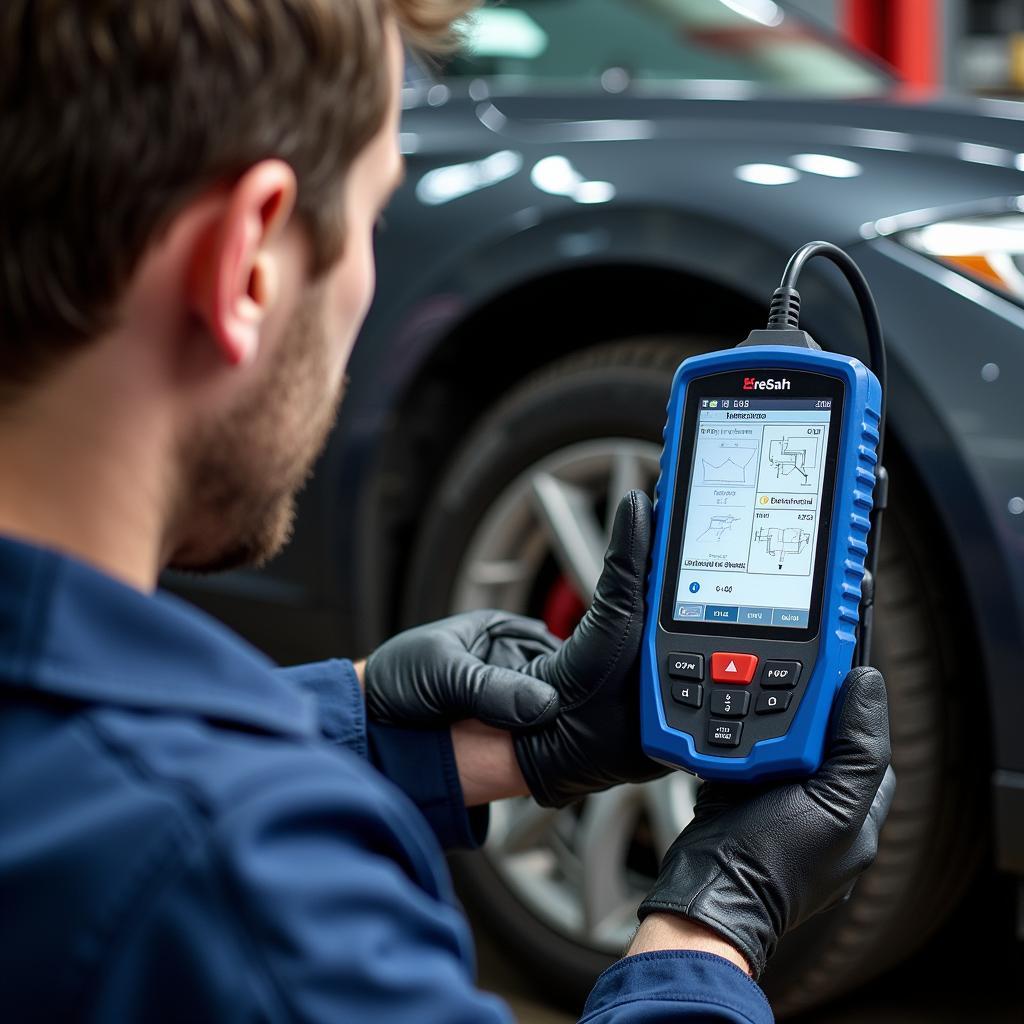Understanding what your 2005 5.3l Scan Tool Reading means can be the difference between a quick fix and a trip to the mechanic. Whether you’re a seasoned DIYer or a shop owner, this guide will equip you with the knowledge to interpret those cryptic codes and get your vehicle back on the road.
Decoding the Language of Your Scan Tool
A scan tool is an invaluable tool for diagnosing engine problems. It acts as a translator, converting the complex language of your car’s computer into readable codes. For a 2005 5.3l engine, these codes can point to a variety of issues, ranging from minor sensor malfunctions to more serious engine problems.
Common 2005 5.3l Scan Tool Codes and Their Meanings:
-
P0171 and P0174 (System Too Lean): These codes often indicate a vacuum leak, a faulty mass airflow sensor (MAF), or a problem with the oxygen sensors.
-
P0300 (Random/Multiple Cylinder Misfire): This code suggests a general misfire issue, which could be caused by faulty spark plugs, ignition coils, or fuel injectors.
-
P0420 (Catalyst System Efficiency Below Threshold): This code typically points to a failing catalytic converter, although it could also be triggered by a faulty oxygen sensor.
-
P0128 (Coolant Thermostat – Coolant Temperature Below Thermostat Regulating Temperature): This code suggests a problem with the thermostat or its circuitry, potentially leading to poor engine warm-up.
Beyond the Codes: Effective Troubleshooting Steps
While a scan tool provides a starting point, effective troubleshooting involves a systematic approach:
-
Read and Record All Codes: Note down all the codes displayed on your scan tool. Multiple codes can provide a more complete picture of the problem.
-
Research the Codes: Utilize online resources and repair manuals specific to the 2005 5.3l engine to understand the potential causes behind each code.
-
Inspect the Obvious: Before diving into complex repairs, check for simple issues like loose connections, damaged vacuum hoses, or worn spark plugs.
-
Test Components: Use a multimeter or other diagnostic tools to test the functionality of suspected components, such as the MAF sensor, oxygen sensors, and ignition coils.
-
Clear the Codes and Retest: After addressing potential issues, clear the codes using your scan tool. Drive the vehicle and rescan to see if any codes reappear.
 Mechanic inspecting a 2005 5.3L engine
Mechanic inspecting a 2005 5.3L engine
When to Seek Professional Help
While many 2005 5.3l engine issues can be diagnosed and repaired at home, some situations warrant the expertise of a qualified mechanic:
-
Complex Electrical Problems: Diagnosing and repairing complex electrical issues often requires specialized knowledge and equipment.
-
Internal Engine Problems: If your scan tool readings suggest internal engine damage, such as low compression or timing chain issues, it’s best to consult a professional.
-
Lack of Time or Expertise: If you lack the time, tools, or confidence to tackle repairs yourself, a qualified mechanic can provide a reliable solution.
“Understanding your scan tool readings is like having a conversation with your vehicle,” says John Miller, a certified master mechanic with over 20 years of experience. “It’s telling you what’s wrong, and with the right approach, you can use that information to get it running smoothly again.”
Getting the Most Out of Your Scan Tool Investment
Investing in a quality scan tool is crucial for any 2005 5.3l owner. Here are some tips for maximizing its value:
-
Choose the Right Scan Tool: Opt for a scan tool specifically designed for your vehicle make and model.
-
Learn its Features: Familiarize yourself with the different functions and capabilities of your scan tool.
-
Regularly Update its Software: Manufacturers often release software updates that enhance functionality and code coverage.
Conclusion
Interpreting a 2005 5.3l scan tool reading doesn’t have to be a daunting task. Armed with the right knowledge and a systematic approach, you can effectively diagnose and address many common engine problems. For all your scan tool needs and expert advice, contact ScanToolUS at +1 (641) 206-8880 or visit our office at 1615 S Laramie Ave, Cicero, IL 60804, USA. We’re here to help you keep your vehicle running smoothly.



